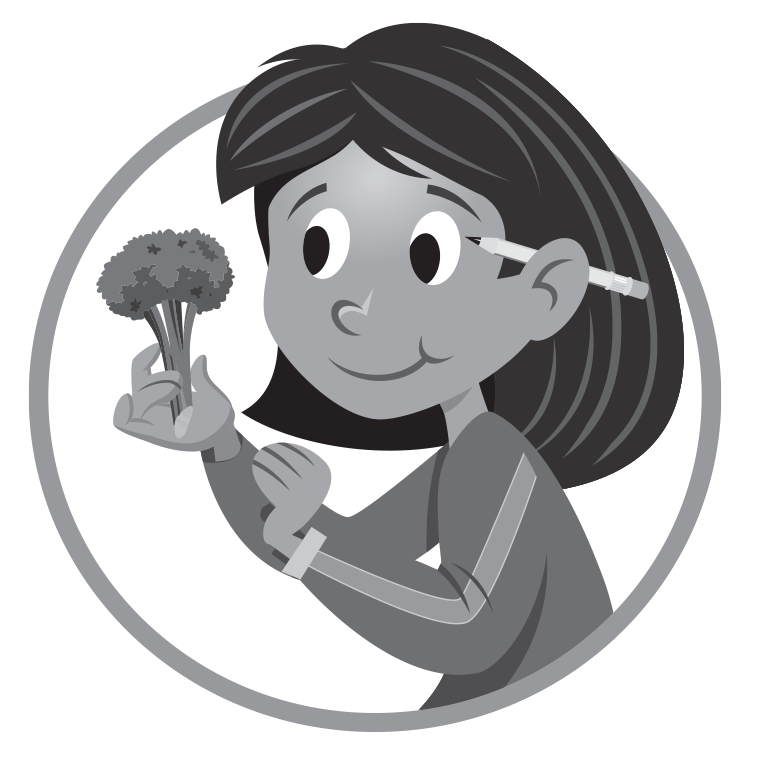This lesson is part of a series called, Edible Plant Parts. These lessons allow students and teachers to examine the six basic plant parts—roots, stems, leaves, flowers, fruits, and seeds—in a unique way. Through hands-on activities, students will learn about the different plant parts, as well as how to include fruits and vegetables into their daily meals as part of a healthy diet. Students will also learn about agriculture and the people who produce our food. The remaining lessons can be found at the following links:

In this lesson, students will be fascinated to learn that when broccoli or cauliflower is served at dinner, they are eating stems. Stems typically support the leaves, flowers, and fruit of a plant. They also connect the leaves to the roots for transporting water and minerals through the phloem and xylem. Liverworts, hornworts, and mosses are the only green plants that do not have stems. For this lesson student's experience for eating vegetables that live and grow above and underground would be required for helping them gain an understanding for the functions and varieties of stems.
Students will also learn about agriculture which is the business of growing crops and raising livestock by people commonly called farmers. This type of work is normally done on a piece of land called a farm. Commodities such as fruits, vegetables, nuts, grains, and various types of animal meat are the edible food products grown and raised by farmers. These food products are harvested, processed, packaged, and delivered to grocery stores, farmer's markets, and restaurants for us to enjoy.
Stems can be very short, as in lettuce plants, or very tall, as in the trunks of redwood trees. Stems can be hollow, as in daffodils, or somewhat solid, as in tree trunks. Food produced in leaves through photosynthesis travels down the stems through the phloem to the roots and fruits, while water and nutrients absorbed by the roots travel up the stems through the xylem to other parts of the plant. Edible stems include asparagus, bamboo shoots, and sugar cane. Celery and rhubarb are commonly classified as a stem we eat, however, this is a misconception. Scientifically speaking, celery and rhubarb are actually petioles or leaf stalks, and are classified as a leaf. Other edible plant stems include those in broccoli and cauliflower, even though they are not necessarily grown for their stems. All varieties of potatoes are special stems, called tubers, that grow underground. A tuber is a short, thickened, fleshy portion of a plant which grows an underground stem.
Many interesting products come from stems. Granulated sugar is processed from the above-ground stems of sugar cane or the below-ground tuber of sugar beets. Maple sugar is obtained from the trunks of maple trees. Cinnamon comes from the bark of trees in the Cinnamomum genus.
